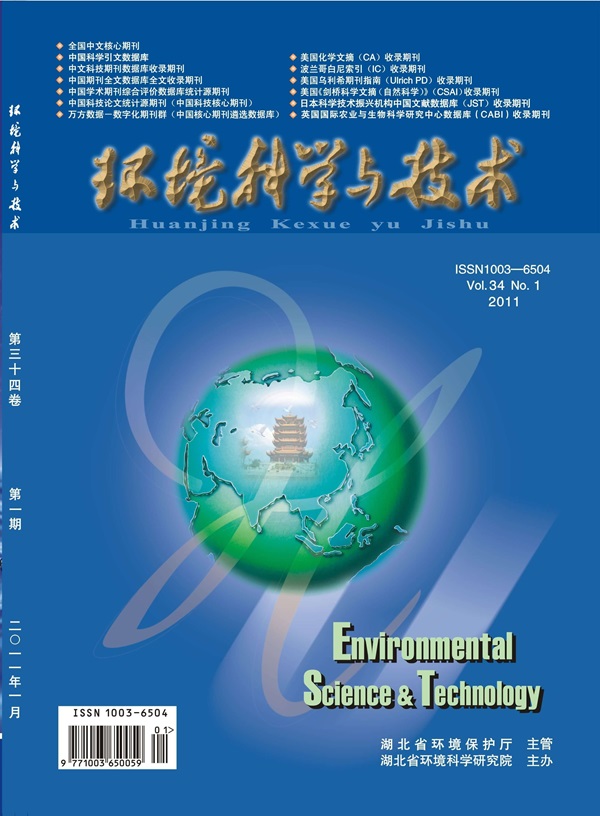Comprehensive Insight into the Common Organic Radicals in Advanced Oxidation Processes for Water Decontamination
IF 11.3
1区 环境科学与生态学
Q1 ENGINEERING, ENVIRONMENTAL
引用次数: 0
Abstract
Radical-based advanced oxidation processes (AOPs) are among the most effective technologies employed to destroy organic pollutants. Compared to common inorganic radicals, such as •OH, O2•–, and SO4•–, organic radicals are widespread, and more selective, but are easily overlooked. Furthermore, a systematic understanding of the generation and contributions of organic radicals remains lacking. In this review, we systematically summarize the properties, possible generation pathways, detection methods, and contributions of organic radicals in AOPs. Notably, exploring organic radicals in AOPs is challenging due to (1) limited detection methods for generated organic radicals; (2) controversial organic radical-mediated reaction mechanisms; and (3) rapid transformation of organic radicals as reaction intermediates. In addition to their characteristics and reactivity, we examine potential scenarios of organic radical generation in AOPs, including during the peroxide activation process, in water matrices or with coexisting organic pollutants, and due to the addition of quenching agents. Subsequently, we summarize various methods for organic radical detection as reported previously, such as electron paramagnetic resonance spectroscopy (EPR), 31P nuclear magnetic resonance spectroscopy (31P NMR), liquid/gas chromatography–mass spectroscopy (GC/LC–MS), and fluorescence probes. Finally, we review the contributions of organic radicals to decontamination processes and provide recommendations for future research.全面了解用于水净化的高级氧化工艺中的常见有机自由基
以自由基为基础的高级氧化工艺(AOPs)是销毁有机污染物的最有效技术之一。与常见的无机自由基(如 -OH、O2 和 SO4)相比,有机自由基种类繁多,选择性更强,但却很容易被忽视。此外,人们对有机自由基的产生和贡献仍然缺乏系统的了解。在这篇综述中,我们系统地总结了有机自由基的特性、可能的生成途径、检测方法以及在 AOP 中的贡献。值得注意的是,探索 AOPs 中的有机自由基具有挑战性,这是因为:(1)生成的有机自由基的检测方法有限;(2)有机自由基介导的反应机制存在争议;以及(3)有机自由基作为反应中间体的快速转化。除了有机自由基的特性和反应性之外,我们还研究了在 AOPs 中生成有机自由基的潜在情况,包括在过氧化物活化过程中、在水基质中或与有机污染物共存时,以及由于添加淬火剂而产生的有机自由基。随后,我们总结了之前报道的各种有机自由基检测方法,如电子顺磁共振波谱(EPR)、31P 核磁共振波谱(31P NMR)、液相/气相色谱-质谱(GC/LC-MS)和荧光探针。最后,我们回顾了有机自由基对去污过程的贡献,并对未来的研究提出了建议。
本文章由计算机程序翻译,如有差异,请以英文原文为准。
求助全文
约1分钟内获得全文
求助全文
来源期刊

环境科学与技术
环境科学-工程:环境
CiteScore
17.50
自引率
9.60%
发文量
12359
审稿时长
2.8 months
期刊介绍:
Environmental Science & Technology (ES&T) is a co-sponsored academic and technical magazine by the Hubei Provincial Environmental Protection Bureau and the Hubei Provincial Academy of Environmental Sciences.
Environmental Science & Technology (ES&T) holds the status of Chinese core journals, scientific papers source journals of China, Chinese Science Citation Database source journals, and Chinese Academic Journal Comprehensive Evaluation Database source journals. This publication focuses on the academic field of environmental protection, featuring articles related to environmental protection and technical advancements.
 求助内容:
求助内容: 应助结果提醒方式:
应助结果提醒方式:


